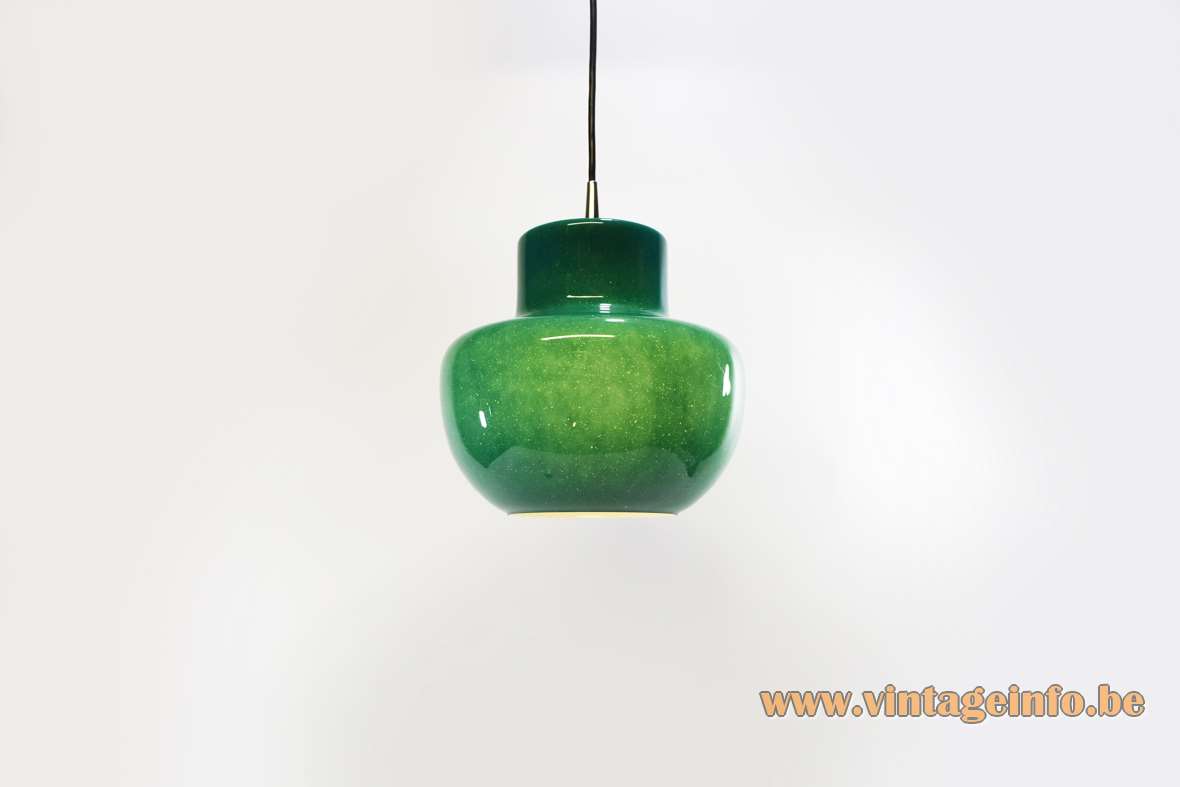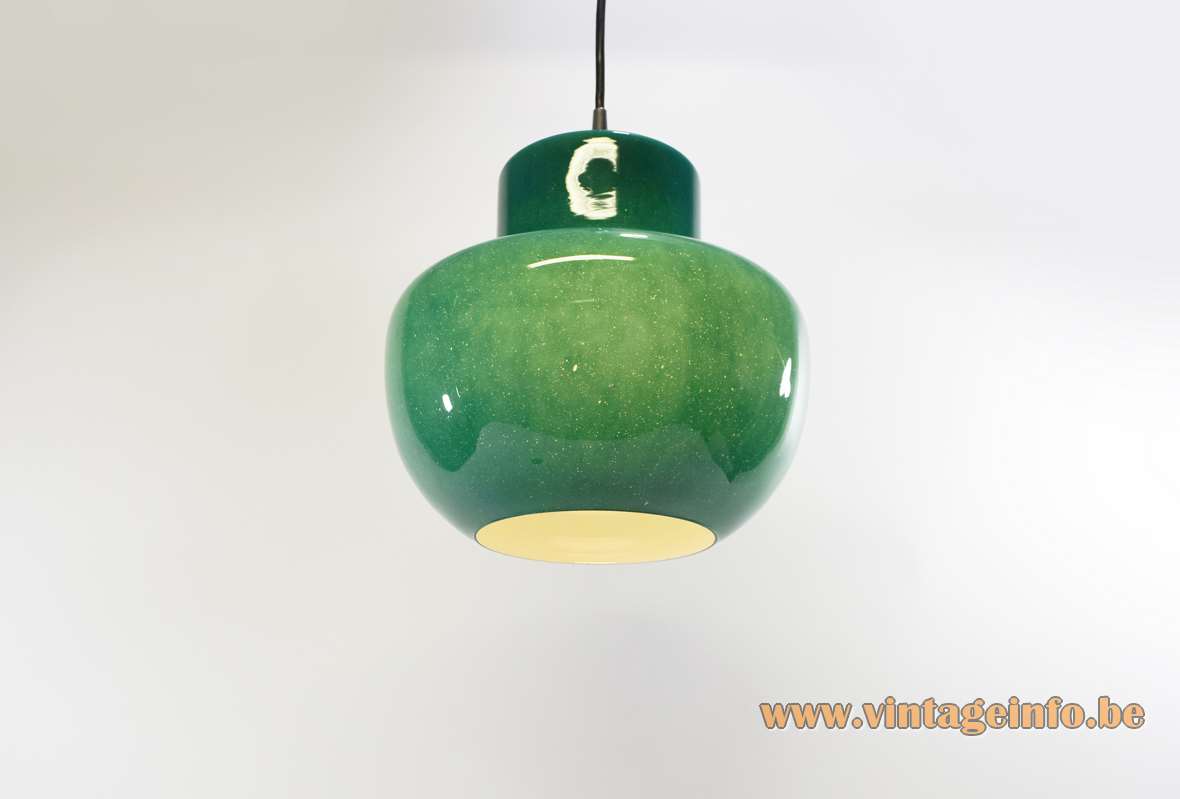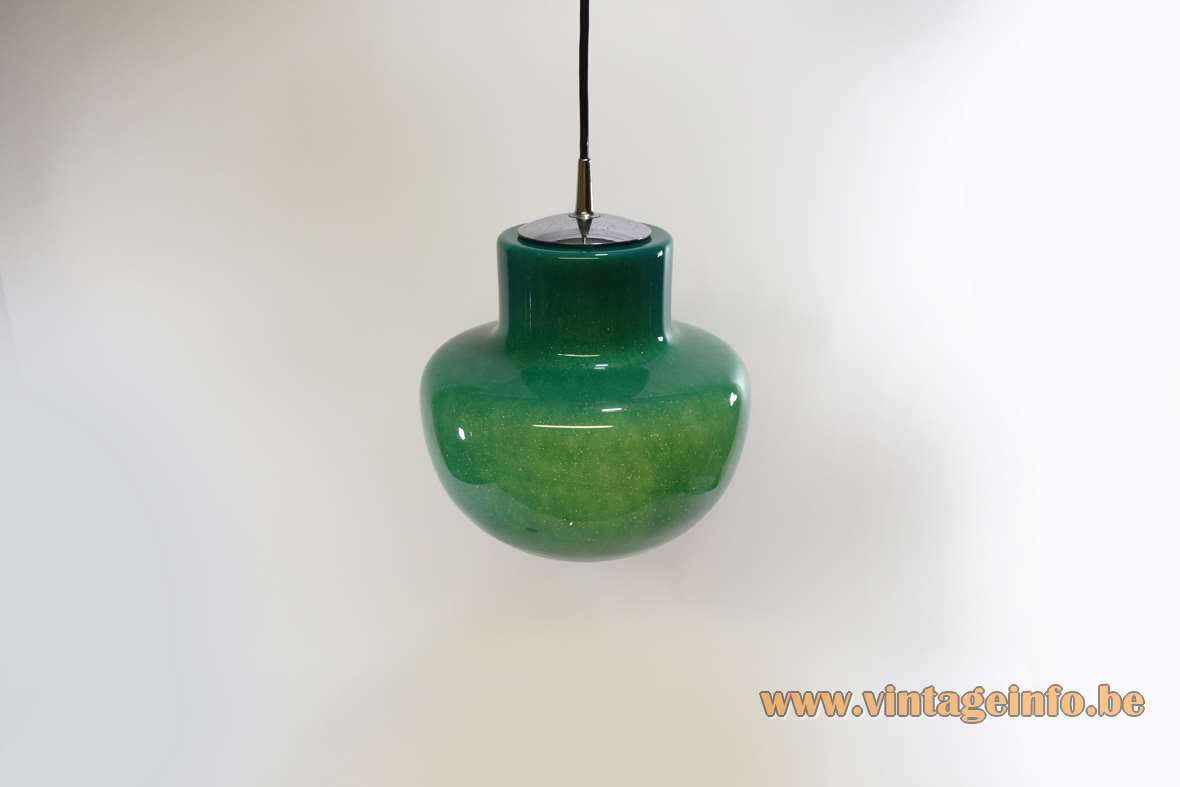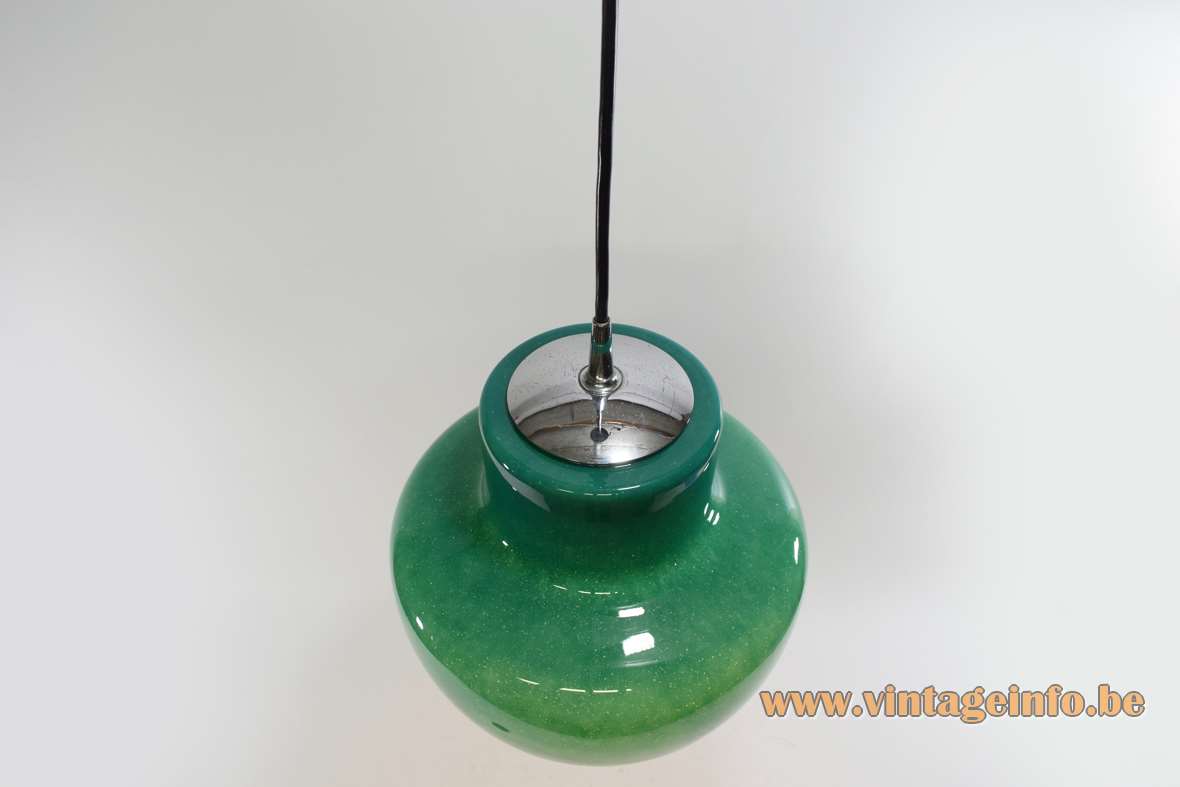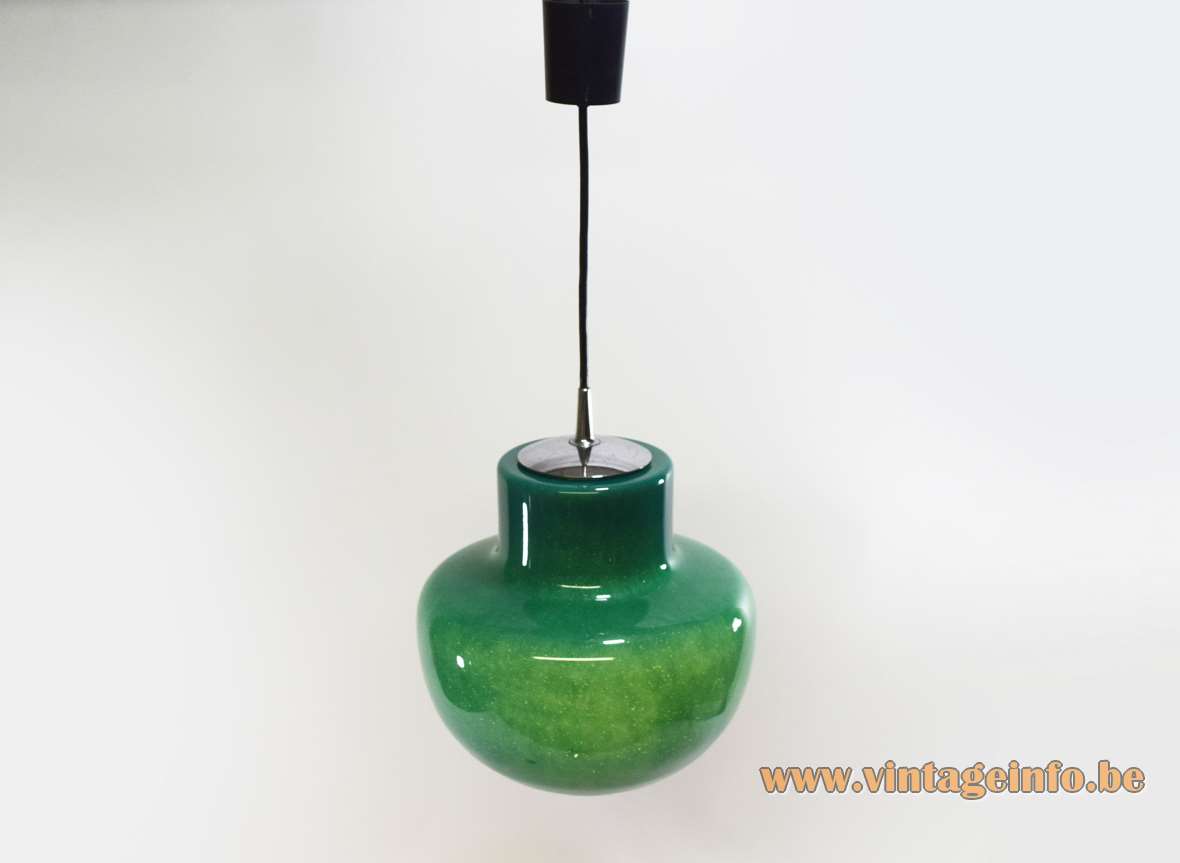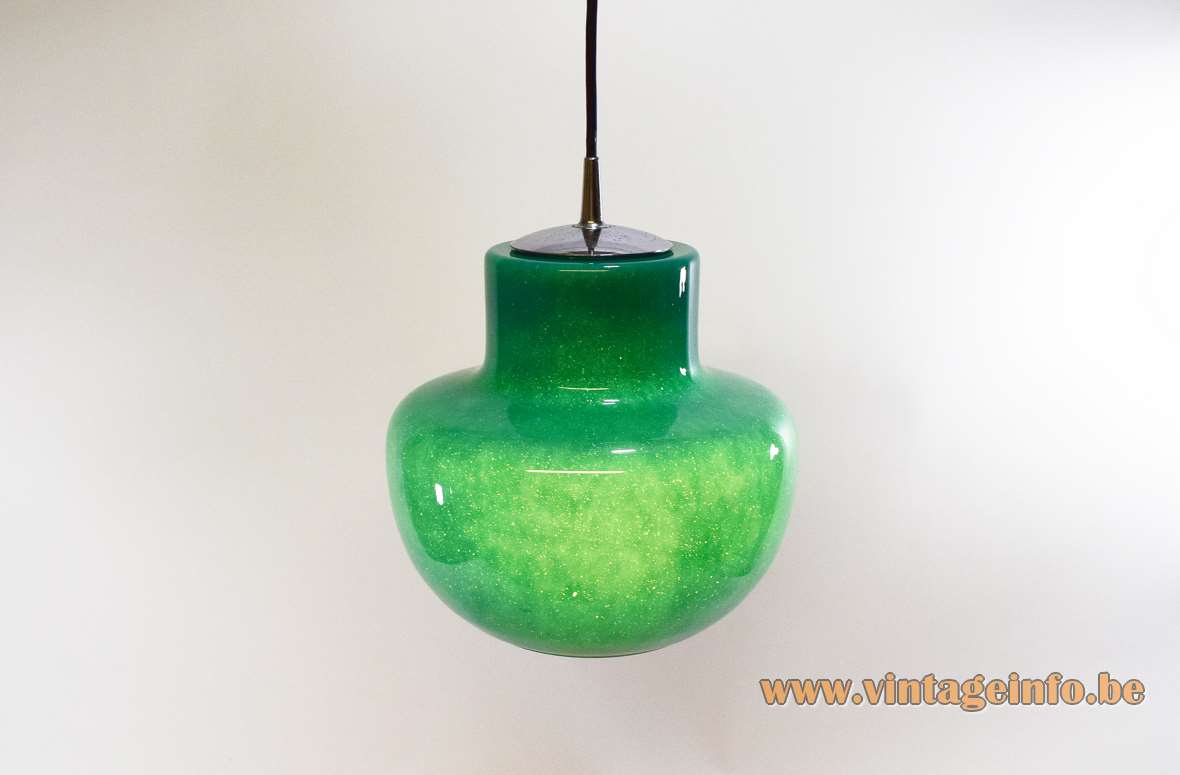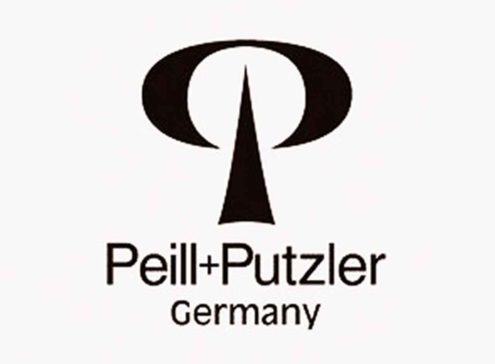Green Glass Pendant Lamp
Materials: Hand blown clear green crystal bubble glass (pulegoso) lampshade. White on the inside (incamiciato). Chromed metal (iron) lid and lamp socket holder on top. Metal E27 socket.
Cord Length: 80 cm / 31.49’’
Height: 35 cm / 13.77”
Width: ∅ 30 cm / 11.81”
Electricity: 1 bulb E27, 1 x 75 watt maximum, 110/220 volt.
Any type of light bulb can be used, not a specific one preferred.
Period: 1970s – Mid-Century Modern.
Designer: To be appraised.
Manufacturer: Peill + Putzler, Düren, Germany.
Other versions: This green glass pendant lamp exist in several colours.
No label present on this one, but it has the correct electric and metal parts. The chrome lid on top is used for many other lamps made by Peill + Putzler in the 60’s and 70’s. For instance, the Futura pendant lamp has the same parts.
Peill + Putzler
Glashüttenwerk Peill und Sohn was founded in 1903 in Düren, a small town in Germany. Peill und Sohn merged with Putzler (founded in 1869) in 1947 as a glass-works and lighting company and became Peill + Putzler Glashüttenwerke.
The company always worked with important designers such as Wilhelm Wagenfeld, William Brown, Helmut Demary, Aloys Ferdinand Gangkofner, Horst Tüselmann and many others.
In the 1950’s 1500 people were working for the company. They also produced glass for other light companies in Europe, such as Raak, Amsterdam, The Netherlands.
In 1995 the production of glass and lighting moved to Slovenia, Poland and the Czech Republic. Only the trading of lamps en glass stayed in Düren. 1 year after the 100th anniversary in 2004, bankruptcy was filed.
In 2008 the name Peill + Putzler was re-used for several years for among others the Wagenfeld lighting of the German lighting company of Paul Neuhaus.
Today the Peill + Putzler factory is named Glashütte Düren and is converted to many other businesses and conference centre.
Pulegoso: Italian word taken from the dialect word pulega, which means bubble. The glass is containing numerous bubbles of all sizes, produced by adding bicarbonate/soda, gasoline, or other substances to the glass. The bubbles make the glass semi-opaque and give the surface an irregular texture. The technique was developed in the 1920’s by Napoleone Martinuzzi (1892-1977) on the island of Murano, Italy and used for the first time by the famous Venini company.
Incamiciato: overlay lattimo glass (= milky looking glass) with a layer of transparent coloured glass.
Links (external links open in a new window)
iF-Design awards for Peill + Putzler
